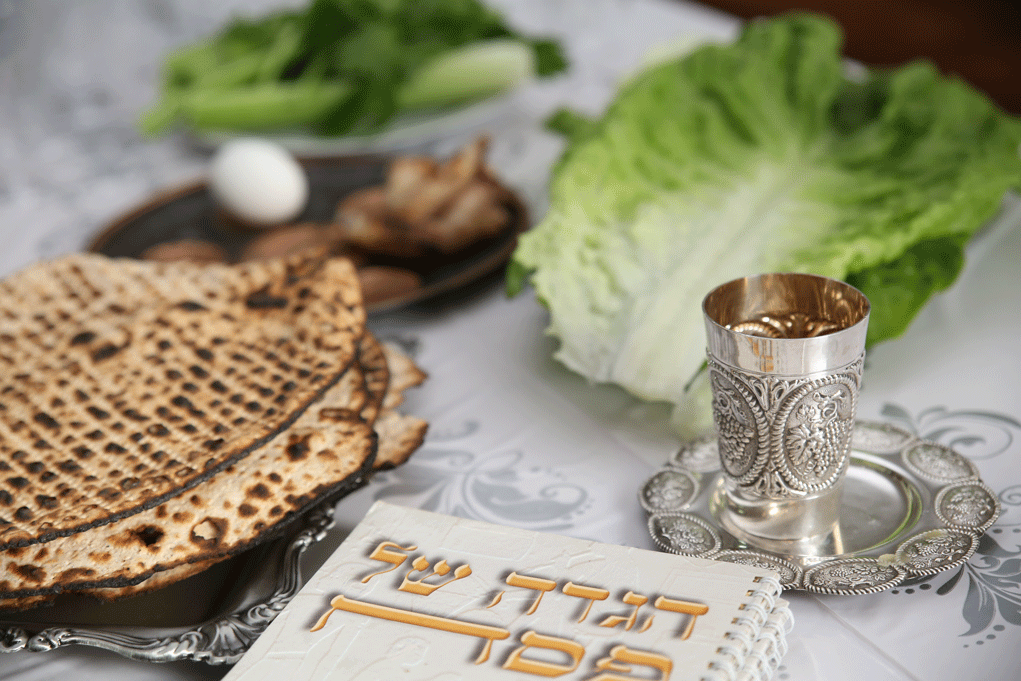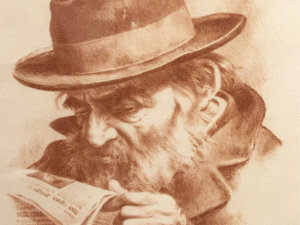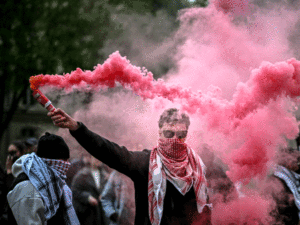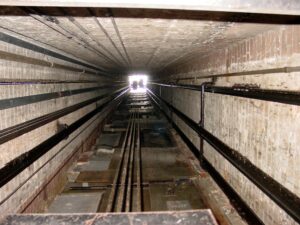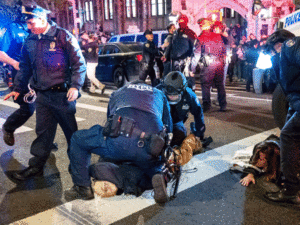When we sit around the Seder, wrapped in our royal kittel, new and old editions of the Haggadah before us, we will be reenacting a universal and ancient ritual. There were gedolim who made sure to remind everyone at the table that all over the world, as we did for centuries and millennia, we will be eating the exact same matzah, maror and karpas as our ancestors, children and friends. It is a reminder that Klal Yisroel is alive and well, untouched by the winds of change and plots of those who would destroy us. We will sing Vehi She’amda, probably with several tunes, but this year especially, the message will ring painfully but powerfully true that we are still here and always will be. Other nations have come and gone. The Incas and Mayas, ancient though they were, exist, if at all, in museums and glass cases. But, as Rav Yaakov Emden wrote two centuries ago, the greatest miracle in Jewish history is our survival itself. All of this must permeate our Seder or else we have missed a major component and opportunity.
However, there are even deeper themes at each Seder. The questions and answers, which are mandated at the Seder, speak eloquently about our intellectual honesty. All four sons, of various degrees of commitment and intellectual ability, are present and accounted for. They ask difficult questions and are prompted to do so even if they don’t come forth spontaneously. We have nothing to hide and everything of which to be proud. However, coming right after earthquakes and eclipses, while some of our brethren are still hostages to vicious anti-Semites, there is a new mandate to be followed, using the same ancient language, text and songs. What exactly is this year’s special goal?
First of all, let’s review some classic themes and their application today. The Mishnah (Pesochim 116a) teaches that we should begin with the degradation of Klal Yisroel and then speak joyfully of the transition to avodas Hashem and praising Him for His kindness. Additionally, we must avoid talking dryly of ancient events, opting instead to reenact and relive them ourselves. As a number of gedolim have said and written, this is the most difficult accomplishment of the Seder, to actually feel and experience both the bondage and redemption that happened 3,336 years ago.
But according to my rebbi, Rav Yitzchok Hutner (Maamorei Pachad Yitzchok, Pesach, 8:7, page 56), something much more cosmic happened then and we must make sure that we transmit it again at our Seder. “We are required to know,” he said and wrote, “that the act of creation we call Bereishis happened in two stages (mahaduros). One was the physical creation of heaven and earth and the other was the primacy of Bnei Yisroel in that creation. The second flows from the declaration (see the second Rashi in Chumash) that the world was created for the “first,” which refers to Klal Yisroel. Since, by definition, there can only be one “first,” just as there can only be one bechor, so there can only be one beginning, part of which refers to Klal Yisroel.” Although there is much more in that maamar, it should be sufficient for us at the moment to reflect upon the incredible magnitude of this teaching.
To broaden the scope of this idea, let us attempt to enter the Seder from the lofty vantage point of watching the universe change completely and totally during the event known as Yetzias Mitzrayim. To do so, we will turn to the eternal words of the Maharal (Gevuros Hashem, chapter 47) as explained by the Pachad Yitzchok (45; 47:5). In essence, the Maharal teaches that there are three units of ten that changed the world: the Ten Statements by which the universe was created (Avos 5:1), the Ten Makkos and the Ten Commandments. The relationship between the three is that “the Ten Makkos constitute the transition from the Ten Statements to the Ten Commandments.”
To concretize this profound but esoteric statement, I would like to suggest a metaphor to make it somewhat more comprehensible. Someone calls a plumber because there is a major water leak in his home. The plumber arrives, assesses the situation, and immediately shuts off the water completely so that he can work unencumbered. The next day, unfortunately, another crisis arises, with the electric lights flickering on and off dangerously. The electrician shuts off the electricity so that he can repair the damage without causing danger to himself and others.
Hashem created a beautiful world, but His most important creation failed (see beginning of Derech Hashem). After Noach is also given an opportunity to save the world, he, too, fails, and Hashem initiates the plan that He had in mind all along. It is to create a nation that will justify the vast magnificence of His universe. To do this, He must shut down each of the Ten Statements for the nation who will now carry the burden and glory of being the true purpose of everything.
We will use just the simplest and easiest of the examples for this grand scheme. Hashem declared, “Let there be light” (Bereishis 1:3). In the makkos, He brought darkness upon the world, ending the reign of the original Statement. The proof of this transition is that while the Egyptians were paralyzed by darkness, “for all the Bnei Yisroel there was light in their dwellings” (Shemos 10:23). As the Maharal and Rav Hutner taught us, this allowed for a new world to be recreated purely for the sake of those who now adhere to the Ten Commandments. The proof that this connection is absolute is that during Moshe Rabbeinu’s first prophesy, as he stood in front of Har Sinai, He was told, “When you take the people out of Egypt, you will serve Hashem on this mountain” (Shemos 3:12). The Rambam (Hilchos Yesodei HaTorah 8:2) cites this promise as a fundamental teaching of Judaism. Perhaps one of the aspects of the Rambam’s ruling is that Hashem’s first words to Moshe Rabbeinu sealed the connection between the original creation, the makkos and the Aseres Hadibros.
In any case, we conclude that although Yetzias Mitzrayim surely contains enough grandeur to justify its importance in our daily liturgy and the Yom Tov of Pesach, its true character goes far beyond freedom and redemption. It represents the molecular change in the universe that occurred in the year 2448 after creation. From then on, every blade of grass, every stone, every mountain, and every star was recreated for Am Yisroel alone. One of the goals of our Seder must be to identify and become one with this seismic change in the universe. Once many of us experienced an earthquake and eclipse in almost immediate consecutive order, we must realize that this was but a microcosm of what occurred from Pesach to Shavuos of the year 2448.
Finally, we all know that Pesach was our birthday as a nation. Yet, how many of us know that there was an actual moment when we emerged from a “birth canal”? Some of our greatest baalei machshavah, including mekubalim such as the Maharal (Gevuros Hashem, chapter 3), the Arizal (quoted by Rav Yitzchok Eizik Chover in introduction to “Yad Mitzrayim”), and the Leshem (Shaarei Leshem 2:4, and see, also Rav Dovid Cohen, rosh yeshiva of Yeshivas Chevron, in Zeman Cheiruseinu, mammar 3), understand Krias Yam Suf to have been the culmination of the birth process that began on the 15th of Nissan and ended on the 21st with our emergence from the birth canal of the Yam Suf into the kedusha of Am Yisroel. These giants all affirm that, indeed, Pesach represents the creation of an entirely new entity in the world. This assertion mirrors that of the Kuzari that although until the first Pesach there were four elements of creation (the inanimate, the vegetative, animals and man), after Pesach there was now also Am Yisroel for whom the world was indeed recreated.
This explains many things. Perhaps most importantly, we can now understand why we refrained from singing shirah until the seventh day of Pesach. This was because our own creation was not complete until we were actually born. In the language of the Yerushalmi (Pesochim 10:6), this was the gemar geulaseinu and therefore merited and allowed for the highest level of communication, which is called shirah. The inner significance of this is that the Zohar reveals that in Mitzrayim, the dibbur (the power of speech) was in exile. With redemption came the power of speech, but this was not solidified until we sang shirah. The Zohar cites the posuk (Shemos 2:23) which states, “The Bnei Yisroel groaned…cried out…their outcry went up to Hashem…Hashem heard their moaning.” Each of these expressions of tefillah rose in depth and stature until Krias Yam Suf, when we achieved the level of prophesy necessary for shirah.
At the Seder, we also express numerous forms of speech: Va’amartem zevach Pesach, Haggadah, sippur Yetzias Mitzrayim, and finally, the Hallel in two stages, which reflects our growth as human beings and as Jews. Indeed, the Arizal states that the word Pesach stands for peh sach, the mouth that speaks, which is the very essence of this Yom Tov. Again, the Pachad Yitzchak (Maamorim 15 and 16) explains that since man was created as a speaking creature (Targum Onkelos to Bereishis 2:8), the second edition of man, our birth on Pesach, had to be granted a new mode of speech to reflect the novel element that had entered creation, Am Yisroel, Hashem’s bechor.
All of this brings us to the grandeur and splendor of the night of Pesach. If we have indeed achieved the level of reliving the Exodus, we also experience the rebirth and new wave of kedusha that entered our souls and even bodies. Therefore, when we eat the matzah, which is a mitzvah de’Oraisa, when we eat the maror and drink the arba kosos, we allow our neshamos to purify our bodies (language of the Derech Hashem) to an even greater extent than on Yom Kippur. On Yom Kippur, we avoid food, which is at that time only corporeal, but on Pesach, even our physical bodies can be as pure as our souls when we eat lesheim Shomayim and elevate every part of the new partnership of guf and neshomah. This is the true majesty of the Seder and the goal of Pesach itself.
The mandate for this year’s Seder should perhaps be to elevate ourselves, our families and our Seder to the point where our brethren will all know that it is only the power of Torah and kedusha that makes us unique and can make us triumph over our enemies. It is these thoughts and belief that iy”H will truly help us bring back shalom and harmony into our midst. May we be zocheh through these wonderful nights to the true geulah bemeheirah beyomeinu.
